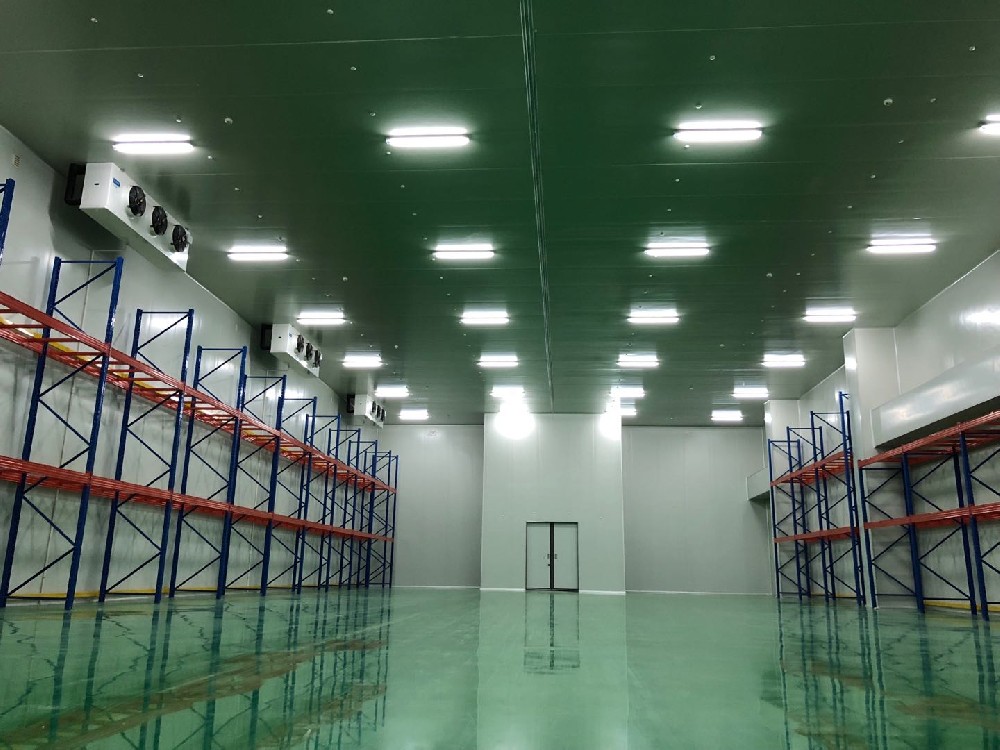Optimal monitoring with unique fire alarm (fire detection and early warning)
Warehouse and freezer
The application of distributed fiber optic temperature sensing technology in warehouses and cold storage facilities provides an important solution for temperature monitoring and management. Warehouses and cold storage facilities are commonly used for storing goods, food, pharmaceuticals, and other items, making temperature control and monitoring crucial.
In warehouses, the storage conditions of goods often require maintaining a specific temperature range. Temperature fluctuations can result in a decline in product quality, spoilage, or damage. Therefore, accurate monitoring of the internal temperature in warehouses is essential to ensure the quality of goods.
 Cold storage facilities, on the other hand, are used to store items that require low-temperature preservation, such as food, pharmaceuticals, and biological samples. In cold storage facilities, precise temperature control and monitoring are crucial for maintaining the frozen state of the items, preventing bacterial growth, and preserving the quality of the stored goods.
Cold storage facilities, on the other hand, are used to store items that require low-temperature preservation, such as food, pharmaceuticals, and biological samples. In cold storage facilities, precise temperature control and monitoring are crucial for maintaining the frozen state of the items, preventing bacterial growth, and preserving the quality of the stored goods.
Distributed fiber optic temperature sensing technology can provide a high-precision and real-time temperature monitoring solution. By deploying fiber optic sensors at critical locations within the warehouse and cold storage facility, temperature changes can be detected in real-time, and the temperature data can be transmitted to a monitoring system for real-time recording and analysis.

Fiber Deployment: Install distributed fiber optic sensors at key locations within the warehouse and cold storage facility. The fiber can come into contact with the surfaces or surrounding environment of the storage areas to sense temperature changes.
Real-time Monitoring and Data Acquisition: Utilize distributed fiber optic temperature sensing technology to monitor temperature changes in real-time within the areas connected to the fiber optic sensors. The sensors sample temperature data with high precision and transmit the data to a monitoring system for real-time recording and analysis.
Temperature Alert and Anomaly Alarm: The monitoring system can continuously monitor the temperature and trigger temperature alerts and anomaly alarms if the temperature exceeds or falls below the pre-set thresholds, based on the operational requirements of the warehouse and cold storage facility. This allows for timely notifications to operators for necessary adjustments and actions.
Remote Monitoring and Management: Connect the temperature data to a monitoring system, enabling remote monitoring and management. Operators can access temperature data through a cloud platform or remote terminals, allowing them to view temperature trends and alarm statuses in real-time and perform remote control and adjustments.
Data Analysis and Optimization: Utilize the collected temperature data along with the operational conditions and storage requirements of the warehouse and cold storage facility for data analysis and optimization. This helps optimize temperature control in the warehouse and cold storage areas, enhancing the quality and preservation effectiveness of stored items.

By utilizing the application of distributed fiber optic temperature sensing technology, warehouses and cold storage facilities can achieve real-time temperature monitoring and control, thereby enhancing the quality and safety of stored items. Timely detection of temperature abnormalities and the implementation of appropriate adjustments and measures can help reduce damage and waste of goods. Additionally, the remote monitoring and management capabilities provide operational personnel with the convenience of real-time monitoring and remote operations for warehouses and cold storage facilities. This holds significant importance for industries such as the food industry, pharmaceutical industry, and other sectors that require precise temperature control.
PREVIOUS:Data center





